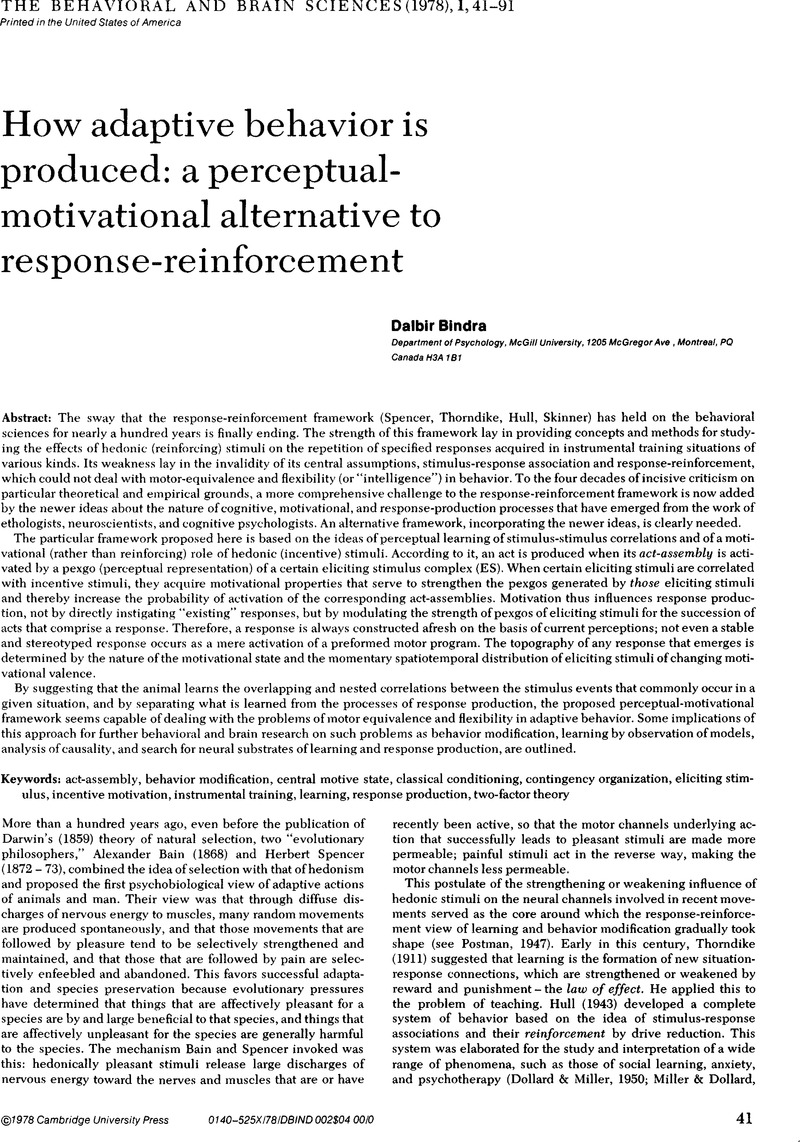No CrossRef data available.
Article contents
Bindra's perceptual-motivational theory and social behaviorism's emotional-motivational theory: separatism exemplified
Published online by Cambridge University Press: 04 February 2010
Abstract
An abstract is not available for this content so a preview has been provided. Please use the Get access link above for information on how to access this content.

Information
- Type
- Open Peer Commentary
- Information
- Copyright
- Copyright © Cambridge University Press 1978
References
REFERENCES
Staats, A. W. (with contributions by C. K. Staats). Complex human behavior. New York: Holt, Rinehart and Winston, 1963.Google Scholar
Staats, A. W. Social behaviorism and human motivation: Principles of the attitude-reinforcer-discriminative system. In Greenwald, A. G., Brock, T. C., and Ostrom, T. M. (Eds.), Psychological foundations of attitudes. New York: Academic Press, 1968.Google Scholar
Staats, A. W., and Warren, D. R.Motivation and three-function learning: Deprivation-satiation and approach-avoidance to food words. Journal of Experimental Psychology, 1974,103:1191–1199.CrossRefGoogle Scholar

